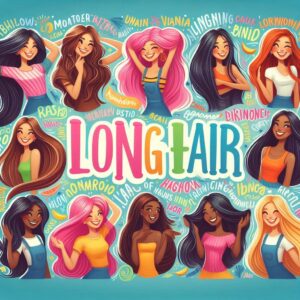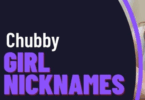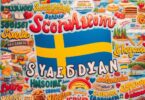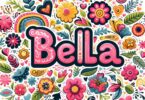1. Introduction: The Enduring Allure of Long Hair and Its Nicknames
Long hair, throughout history and across diverse cultures, has held a profound significance. From ancient mythologies where it symbolized power and vitality, to contemporary fashion where it represents versatility and grace, the cascade of lengthy locks has consistently captivated the human imagination. It’s a statement, a testament to patience, and often, a defining characteristic of an individual’s appearance. But beyond its visual appeal and cultural weight, long hair also inspires a unique vernacular – a delightful array of nicknames that capture its essence, humor, or personal significance. These monikers range from the whimsical to the poetic, reflecting the diverse ways we interact with and appreciate this striking feature. This article embarks on a journey through this fascinating linguistic landscape, uncovering the myriad terms that celebrate the glory of long hair.

Nicknames for Long Hair
2. The Art of Nicknaming: Why We Give Names to Hair
The act of bestowing a nickname, whether on a person, a pet, or even an inanimate object, stems from a deeply human desire for connection, endearment, and personalization. When it comes to hair, this phenomenon is no different. Nicknames for long hair emerge from a blend of observation, affection, and sometimes, a touch of playful teasing. They can be born from a striking characteristic – its incredible length, its vibrant color, or its wild curls. Often, these names are given by loved ones, serving as a shorthand for affection and a recognition of a person’s unique identity. For the individual themselves, a nickname for their hair can foster a deeper connection to their own appearance, turning a physical trait into something more intimate and cherished. It’s a way of celebrating the hair’s personality, as if the strands themselves possess a distinct character worthy of its own special designation.
3. Unique Nicknames for Hair: Beyond the Obvious
Moving beyond generic descriptors, truly unique nicknames for hair often draw inspiration from nature, fantasy, or even abstract concepts. These names are typically more imaginative, painting a vivid picture with words. Consider terms like “Willow” for incredibly long, flowing hair that sways gently, or “Aurora” for hair that seems to shift in color or possesses a magical sheen, reminiscent of the northern lights. “Rapunzel” is a classic, but more distinctive variations might include “Tanglebloom” for hair that’s both abundant and prone to delightful disarray, or “Starfall Strands” for hair that glitters with highlights. The beauty of these unique monikers lies in their ability to evoke emotion and imagery, transcending simple description to create a sense of wonder.
- Willow: For hair that is incredibly long, soft, and flows like a willow tree.
- Aurora: Hair with shifting colors or a luminous quality.
- Lioness Mane: For thick, voluminous, and perhaps wild long hair.
- Cascade: Hair that flows down like a waterfall.
- Enchantress Locks: For hair that seems to possess a magical, alluring quality.
- Midnight Veil: For very long, dark hair.
- Golden River: For long, flowing blonde hair.
- Crimson Tide: For long, wavy red hair.
- Silver Stream: For long, flowing grey or silver hair.
- Gossamer: For very fine, delicate, and ethereal long hair.
4. Nicknames for the Long-Haired Girl: Celebrating Feminine Flow
For many cultures, long hair has been inextricably linked with feminine beauty and grace. Consequently, nicknames for girls with long hair often carry connotations of elegance, gentleness, or playful charm. “Princess Locks” is a common affectionate term, while “Mermaid Hair” perfectly captures the image of long, flowing tresses that seem to belong to the sea. “Golden Girl” or “Brunette Beauty” might refer to specific hair colors, but the emphasis remains on the length and its contribution to an overall feminine aesthetic. These nicknames often highlight the visual appeal and romantic associations tied to long hair in women. They are terms of endearment, often used by family and friends to acknowledge and admire this striking feature.
- Rapunzel: The classic and most recognized nickname for exceptionally long hair, referencing the fairy tale princess.
- Mermaid Hair: For long, often wavy or flowing hair that evokes the imagery of a mermaid’s locks.
- Princess Locks: A sweet and endearing term for beautiful, long hair.
- Golden Girl: Often used for a girl with long, blonde hair.
- Ebony Flow: For a girl with long, dark, and often shiny hair.
- Brunette Beauty: For a girl with long, dark brown hair.
- Crimson Crown: For a girl with long, red hair.
- Silver Siren: For a girl with long, shimmering silver or grey hair.
- Tress Queen: A regal term for someone with impressive long hair.
- Hair Goddess: An appreciative nickname for someone whose long hair is truly stunning.
5. Hairstyle Nicknames: When the Cut Defines the Name
While long hair by definition implies length, the way it’s styled can also inspire a distinct set of nicknames. These terms often reflect a popular cut, a particular styling technique, or even a cultural trend. “The Lion’s Mane,” for instance, might describe a voluminous, untamed mass of long hair, while “Sleek Cascade” refers to perfectly straightened, flowing locks. “Bohemian Waves” evokes a relaxed, natural look, whereas “Rocker Locks” suggests a more edgy, layered style. These nicknames go beyond just the length to encompass the entire presentation of the hair, acknowledging the effort and artistry involved in maintaining and styling it. They are a nod to fashion and personal expression.
- The Waterfall: A very long, flowing style that cascades down the back.
- The Untamed Mane: For wild, voluminous, and often curly long hair.
- Sleek & Straight: For perfectly straight, long hair.
- Bohemian Waves: Long, loose, and natural-looking waves.
- Hollywood Waves: Glamorous, defined, and often voluminous waves in long hair.
- Rocker Locks: Long, often layered and textured hair with an edgy feel.
- The Half-Up Crown: A style where the top section of long hair is pulled back, creating a crown-like effect.
- The Fishtail Flow: Referring to a long fishtail braid.
- The Braided River: For long, intricate braids.
- The Ponytail Perfection: For a flawlessly executed long ponytail.
6. Nicknames for Hair Color: A Spectrum of Shades
Color plays a pivotal role in the identity of long hair, often serving as the primary source for a nickname. From the fiery intensity of red to the cool elegance of silver, each hue inspires its own set of descriptive terms. “Ginger Locks” or “Red Riding Hood” are playful ways to refer to long red hair, while “Golden Strands” or “Sunshine Tresses” aptly describe long blonde hair. Darker shades might inspire names like “Raven’s Wing” or “Midnight Flow.” These nicknames are direct, yet often carry a poetic quality, highlighting the visual impact of the hair’s color against its impressive length. They are a testament to the myriad ways color can define and enhance a hairstyle.
7. Nicknames for Curly Hair: Embracing the Bounce
Long curly hair possesses a unique personality, often described as wild, free, or wonderfully voluminous. The nicknames it inspires reflect this distinct character. “Curltopia” is a whimsical term for a head full of abundant curls, while “Springy Locks” or “Bouncing Curls” emphasize the hair’s natural elasticity. “Ringlet Rhapsody” suggests a harmonious arrangement of perfectly formed curls. These nicknames celebrate the natural texture and movement of long curly hair, often highlighting its untamed beauty and the playful energy it exudes. They are a recognition of the charm and challenge that often comes with managing and styling a magnificent head of long curls.
- Curltopia: A playful term for a magnificent head of long, curly hair.
- Springy Strands: Emphasizing the bounce and elasticity of long curls.
- Ringlet Rhapsody: For perfectly formed, harmonious long ringlets.
- Wild Child Curls: For untamed, voluminous, and free-spirited long curls.
- Corkscrew Chaos: For tightly wound, abundant long curls.
- Cloud of Curls: For very thick, voluminous, and soft long curly hair.
- Spiral Symphony: For long, beautifully coiling curls.
- Tangle Twirls: A more affectionate term for hair that gets beautifully tangled.
- Volume Queen: For someone whose long curly hair boasts incredible volume.
- Texture Treasure: Celebrating the unique texture of long curly hair.
8. Nicknames for Blonde Hair: The Golden Touch
Blonde hair, especially when long, has a particular mystique, often associated with light, warmth, and classic beauty. The nicknames it garners frequently draw upon these associations. “Sunshine Locks” or “Golden Goddess” are common and affectionate terms for long blonde hair, emphasizing its radiant quality. “Platinum Perfection” refers to very light, almost white blonde hair, highlighting its pristine appearance. These nicknames often evoke images of brightness, ethereal beauty, and sometimes, a playful innocence. They capture the luminous quality that long blonde hair brings to an individual’s presence, making it a focal point of their appearance.
- Sunshine Strands: For naturally bright and radiant long blonde hair.
- Golden Goddess: A regal and admiring term for someone with beautiful long blonde hair.
- Honey Hues: For warm, golden blonde tones in long hair.
- Platinum Princess: For very light, almost white blonde long hair.
- Wheat Waves: For long, flowing blonde hair with a natural, earthy tone.
- Butterscotch Braids: For long blonde hair with warm, caramel undertones.
- Beach Blonde Flow: For long, sun-kissed blonde hair reminiscent of beach days.
- Lemon Locks: For bright, vibrant blonde hair.
- Star Dust Strands: For shimmering, light-catching blonde hair.
- Angel Hair: For very fine, soft, and light blonde hair.
9. Names for Hair Styles: A Glossary of Locks
Beyond individual nicknames, the world of long hair also has a rich vocabulary for various styles. These terms are often more descriptive and technical, used by stylists, enthusiasts, and anyone discussing hair trends. Understanding these “names” helps in communicating specific looks and appreciating the artistry involved in hair styling.
- The Classic Cut: Refers to long hair that is simply straight or has very subtle layers, maintaining a uniform length.
- Layers: Long hair cut in varying lengths to create volume, movement, and shape.
- V-Cut/U-Cut: Long hair where the ends are cut in a “V” or “U” shape at the back, giving a structured flow.
- Blunt Cut: Long hair cut straight across at the bottom, creating a strong, defined line.
- Face-Framing Layers: Shorter layers around the face that blend into the longer length, softening the features.
- Curtain Bangs: Long, parted bangs that frame the face like curtains.
- Long Shag: A heavily layered, often textured long haircut with bangs.
- Undercut: Where a section of the hair underneath is cut much shorter or shaved, while the top remains long.
- Box Braids/Knotless Braids: Protective styles where long hair is braided into individual sections.
- Dreadlocks: Long, matted strands of hair formed by intertwining hair.
- Half-Up, Half-Down: A versatile style where the top section of long hair is pulled back, while the rest hangs loose.
- High Ponytail: All long hair gathered and secured high on the crown.
- Low Bun: Long hair gathered into a bun at the nape of the neck.
- Fishtail Braid: An intricate braid created by weaving two sections of hair.
- French Braid/Dutch Braid: Classic braids that incorporate sections of hair as they go down the head.
- Sleek Bun: A tightly pulled-back bun, often favored for formal occasions.
- Messy Bun: A casual, often voluminous bun with loose strands.
- Braided Crown: A braid that wraps around the head like a crown.
- Top Knot: A bun placed high on the crown.
- Space Buns: Two buns placed on either side of the head.
10. Conclusion: The Personal Tapestry of Hair Nicknames
The universe of nicknames for long hair is as diverse and dynamic as the hair itself. These affectionate, descriptive, and sometimes humorous terms transcend mere labels, reflecting the deep cultural, personal, and aesthetic value we place on a magnificent head of hair. Each nickname is a unique thread in the rich tapestry of human expression, celebrating length, color, texture, and style. From the playful to the poetic, these monikers underscore the enduring allure of long hair and its profound impact on our identities and perceptions.
11. Frequently Asked Questions (FAQs)
Q1: Why do people give nicknames to hair? A1: People give nicknames to hair for various reasons, including endearment, personalization, to highlight a unique characteristic (like length, color, or texture), and to foster a deeper connection to their own appearance or that of a loved one. It’s a way of celebrating a prominent physical feature.
Q2: Are hair nicknames common in all cultures? A2: While the specific terms may vary, the act of giving descriptive or affectionate names to hair is a widespread cultural phenomenon. Long hair, in particular, often holds significant symbolic meaning across many societies, leading to a rich vocabulary surrounding it.
Q3: Can hair nicknames be used for both men and women? A3: Absolutely. While some nicknames might traditionally be associated with feminine long hair (e.g., “Princess Locks”), many are gender-neutral and can apply to anyone with long hair, such as “Cascade,” “Lion’s Mane,” or terms related to hair color.
Q4: How do I come up with a unique nickname for my own long hair? A4: Consider your hair’s most striking features: Is it exceptionally long? What’s its natural color and undertones? Is it curly, wavy, or straight? Think about its movement, how it feels, and any personal associations you have with it. Nature, mythology, and descriptive adjectives can be great sources of inspiration.
Q5: Do hair nicknames change over time? A5: Yes, just like personal nicknames, hair nicknames can evolve. As hair changes (gets longer, shorter, colored, or styled differently), or as relationships evolve, the nicknames associated with it may also shift to reflect the current appearance or sentiment.






